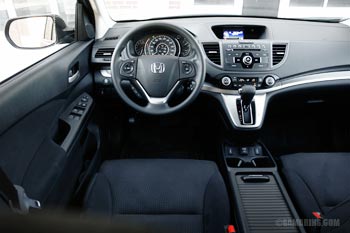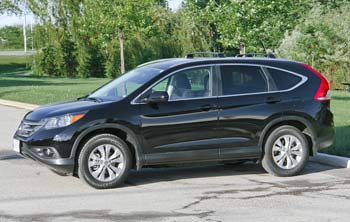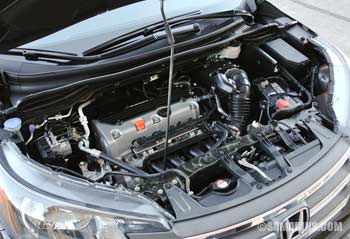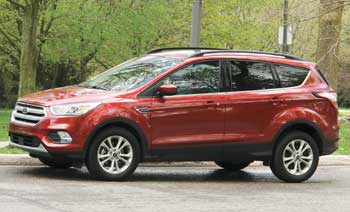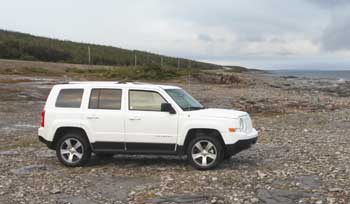Honda CR-V 2012-2016: problems, pros and cons, fuel economy, engines, interior photos
Updated: July 02, 2022
The 2012-2016 Honda CR-V is a 5-seater SUV known for its practicality and reliability. The CR-V has a 4-cylinder engine and an automatic transmission.For the 2015 model year, the CR-V got a facelift, with a new Earth Dreams engine and a CVT transmission as well as an updated chassis. Should you look for the proven 2012-2014 CR-V or the updated 2015-2016 version? Which one is better on gas? What are the common problems? We have done our research:
2012-2016 Honda CR-V Reported Problems: A weak battery, or corroded or loose battery terminals can cause many electrical problems, including various warning lights, lack of steering assist and resetting of the infotainment system. A failed battery is the most common cause for the vehicle not to start. If you suspect the battery is getting weaker, have its capacity tested or replace if it is old.
Failed brake calipers are not uncommon, especially in the Rust Belt. The brake caliper is the part that holds the brake pads. Rear calipers fail more often. Replacing a brake caliper will cost 1.0-1.5 hours of labor (for one) plus the part. Servicing brakes regularly will help calipers to last longer. Read more about brake calipers. Often a bad brake caliper can cause the brake pads and rotors to overheat. In this case, they will also need to be replaced.
In the 2012-2014 CR-V, a bad VTC actuator can cause an intermittent rattling noise lasting for a couple of seconds when the engine is started. The VTC actuator is the chain-driven gear bolted to the intake camshaft. Honda issued technical service bulletins on this issue (TSBs 09-010, 16-012). The required part (VTC actuator) is currently priced at below $200. The labor charge may amount to 2.0-3.0 hours if no other parts are needed. Watch these YouTube videos for more info. While researching owner reviews, we noticed that some owners decided to live with the noise.
There are a few reports that the code P0341 could be caused by a stretched/worn timing chain. Replacing a timing chain and related parts will cost from 3.8 to 5 hours of labor, plus the parts, depending on what's needed to be replaced.
Advertisement
Checking the oil level and topping it up between oil changes can help the timing chain to last longer, as it wears faster if the engine is low on oil. Many modern cars consume oil between oil changes and some Honda engines are known for this issue too.
According to the Honda TSB 15-086, some 2012-2014 CR-V might experience judder or vibration under light acceleration. The fix, according to the bulletin, is updating the A/T software and changing the automatic transmission fluid.
The 2015 upgrade brought new issues. In the beginning, many owners mentioned a vibration when the vehicle is stopped and while driving. Read this note on the Honda US website for more information (TSB 15-046). Of course, by now, it looks like Honda has fixed this issue in most cars, but used car buyers should be aware. Watch these YouTube videos.
2012-2016 Honda CR-V Engine: The 2012-2014 CR-V has a proven 2.4L DOHC i-VTEC K24 engine with 185 horsepower and 163 lb-ft of torque. It's a fairly simple engine with a conventional fuel injection. It has been used in many Honda vehicles and is known to last long with regular care.
With the 2015 facelift, the CR-V received the new K24W Earth Dreams engine. It has a higher compression ratio (11.1:1) and a direct fuel injection. It's also rated at 185 horsepower, but offers more torque: 181 lb-ft.
In a direct fuel injection, the fuel is injected under much higher pressure directly into the combustion chamber to improve fuel efficiency. Mechanically it means a different engine design and an added high-pressure fuel pump that is mounted on the engine and driven by the exhaust camshaft. Read also: Pros and cons of buying a car with Direct Injection.
In terms of maintenance, it's important to maintain the proper oil level for either engine. The Honda Maintenance Minder does not monitor the engine oil level. Driving low on oil might cause the engine and especially the timing chain to wear faster.
Timing belt or chain: Both the 2.4L K24 and Earth Dreams 2.4L K24W engines come with a timing chain. There is no timing belt.
Fuel Economy: The EPA rates the 2012-2014 front-wheel drive automatic CR-V at 23/30 mpg city/highway, while the all-wheel drive model is rated at 22/29 mpg. The updated 2015 all-wheel drive CR-V with a CVT transmission gets 26/32 mpg, which gives it a 428-mile (689 km) range on one tank. Among SUVs of this size, it's one of the best ratings.
Mechanical: The Honda CR-V has MacPherson struts in the front suspension and a multi-link independent layout in the rear suspension.
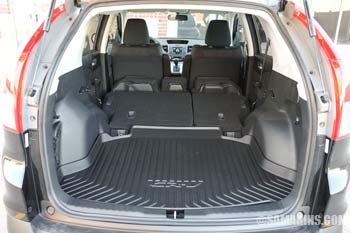 With the rear seats folded, you get 70.9 cu. ft. of almost flat cargo space.
With the rear seats folded, you get 70.9 cu. ft. of almost flat cargo space. Click photo for larger image
The rims in the 2015 CR-V are also half an inch wider. The steering is electrically assisted. Rear brakes are discs. The 2012-2014 CR-V comes only with a 5-speed automatic, while the 2015 and 2016 CR-V has a continuously variable transmission or CVT. Read also: Pros and cons of buying a car with a CVT transmission.
Honda CR-V Driving Experience: The CR-V drives comfortably, like a tall car. The front visibility is great. The ride is fairly smooth, and the 37.3 ft turning radius (2013 EX) makes it easier to navigate through city corners. One minor issue is that at higher speeds, the road and engine noises are noticeable. According to one CR-V owner we spoke to, switching to better Michelin tires significantly reduced the road noise.
Crash Test Rating: The 2012-2014 Honda CR-V got 5 stars overall rating in the NHTSA crash tests. After the facelift, the 2015 CR-V received a 4-star overall rating, with 4 stars in frontal and 5 stars in side crash tests. The 2016 CR-V again scored 5 stars overall.
Pros: Comfortable interior, practical design, front visibility, easy entry and exit, versatile storage options, fuel economy, runs on regular gasoline, easy driving experience, almost flat cargo space.
Cons: Small battery, rear visibility is a bit obstructed by rear pillars, noisy factory tires, road noise.
2012-2016 Honda CR-V: Is it a good vehicle to buy? Despite the problems mentioned above, Honda CR-V is a good choice for a compact SUVs. It's also know for keeping its value longer. As of July 2022, Consumer Reports rated the 2012-2016 Honda CR-V as 'Recommended'.
The 2015 model year brought a more fuel-efficient powertrain but also a spike in reported problems. The 2016 CR-V and the 2012-2014 CR-V have received fewer complaints than the 2015 model. Some issues have been addressed while under warranty, but if you are buying the 2015 CR-V, have it properly inspected.
If you prefer a proven conventional automatic transmission and a simpler engine, look for the 2012-2014 CR-V.
Among competitors, we would highlight the Toyota RAV4 and the Mazda CX-5.
Similar cars:
Used Subaru Forester 2009-2013
Used Toyota RAV4 2006-2012
Toyota RAV4 2013-2018
Used Honda CR-V 2007-2011
Used Mazda CX-5 2013-2016
Jeep Cherokee 2014-2020
Jeep Patriot 2007-2017
Ford Escape 2013-2019
What to look for when buying a used Honda CR-V Watch out for hesitation or jerky shifting of the transmission when accelerating gradually from a stop; several owners mentioned this issue. Watch out for engine/timing chain rattle. If the engine produces a loud rattle, avoid the vehicle. A low engine oil level could be an indication that the engine consumes oil.
Test the air conditioner as A/C problems are not uncommon. Watch out for vibrations when stopped and when accelerating in the 2015 model. Check if the backup camera works and the image is not blurry. Check if all safety recalls have been completed. Have the vehicle properly inspected before buying. Read also: How to inspect a used car - illustrated guide.
Honda CR-V AWD System: Honda CR-V offers an optional Real Time AWD system. It's based on a front-wheel drive, which means front wheels are always powered. The power is sent to the rear wheels when starting from a stop, in snow and in other situations when needed. When cruising under a light load, or in other conditions when it's not required, the rear axle is disengaged.
In terms of maintenance, the CR-V all-wheel drive system adds the transfer case fluid and rear differential fluid changes ($160-$300 for both). The AWD drive (propeller) shaft and rear axles need to be inspected regularly too. Honda doesn't offer a mileage-based maintenance schedule; instead, it relies on the Maintenance Minder system. If you want to know when to change the transfer case and differential fluids, ask your mechanic to inspect the fluid condition during an oil change. It's important to use only the recommended Honda fluid type, as the wrong fluid type can cause problems.
